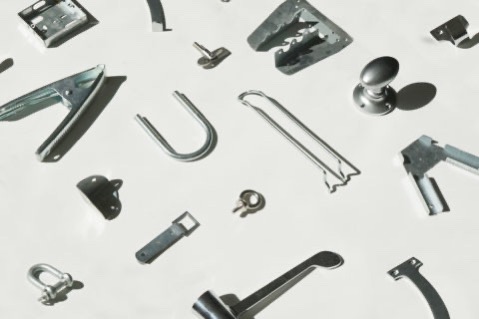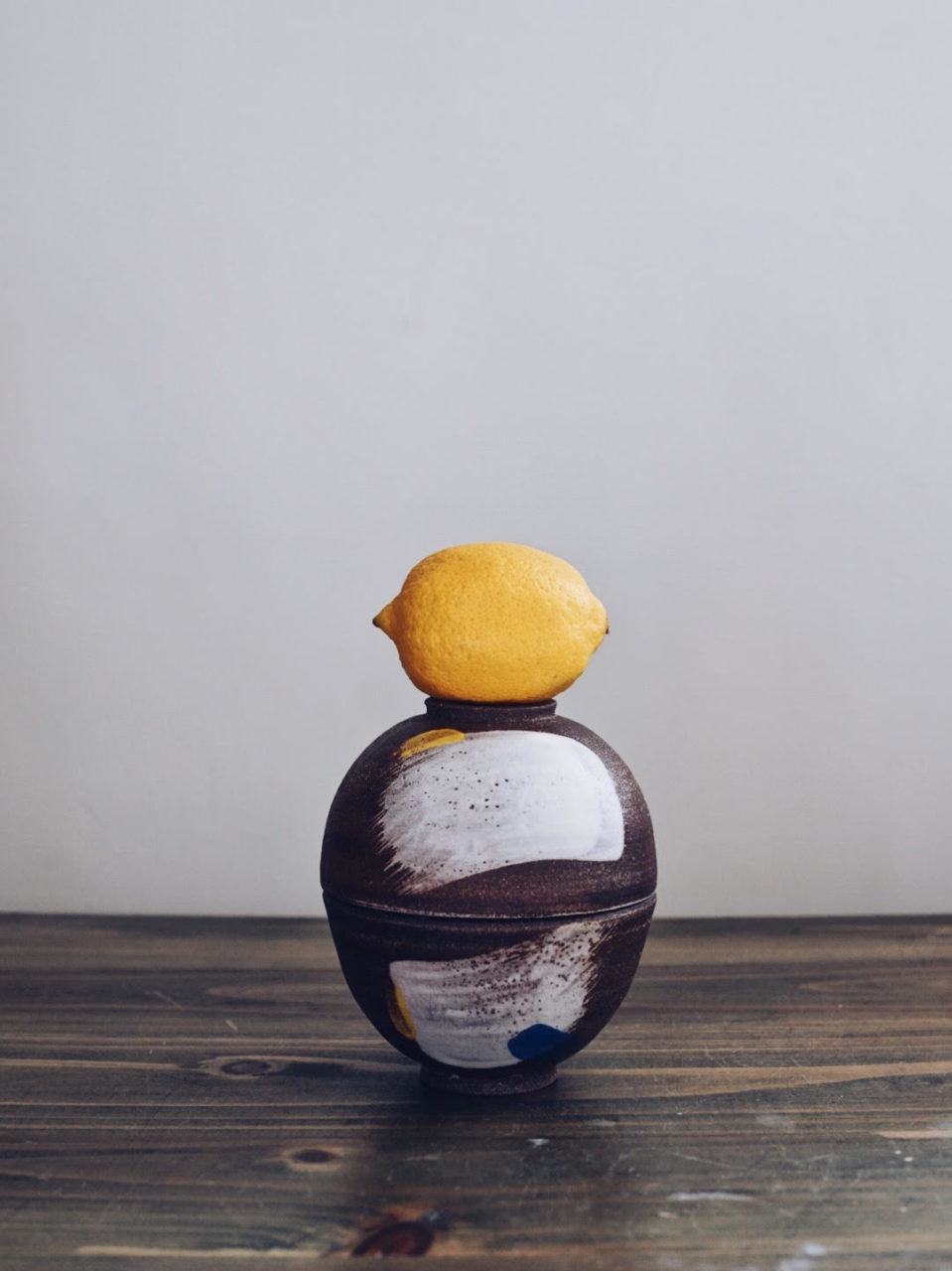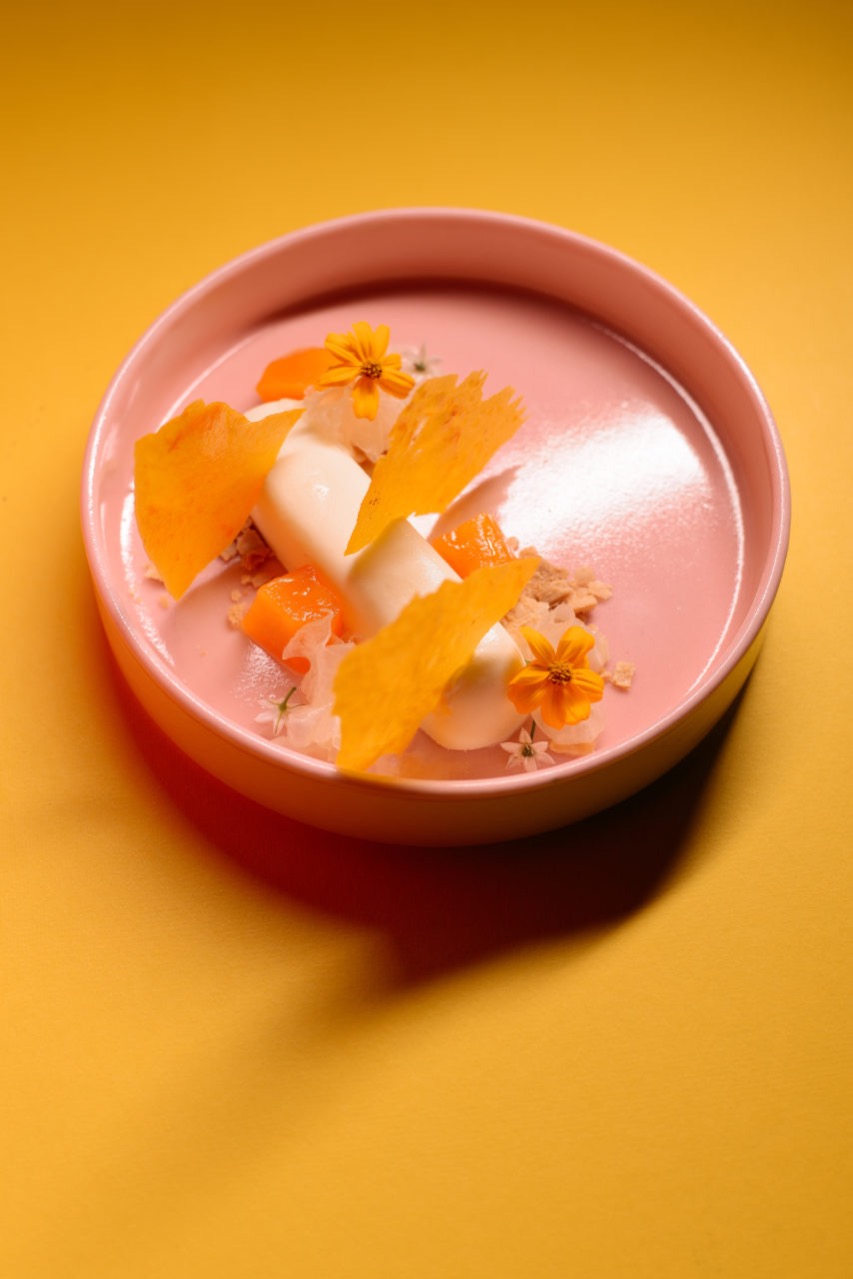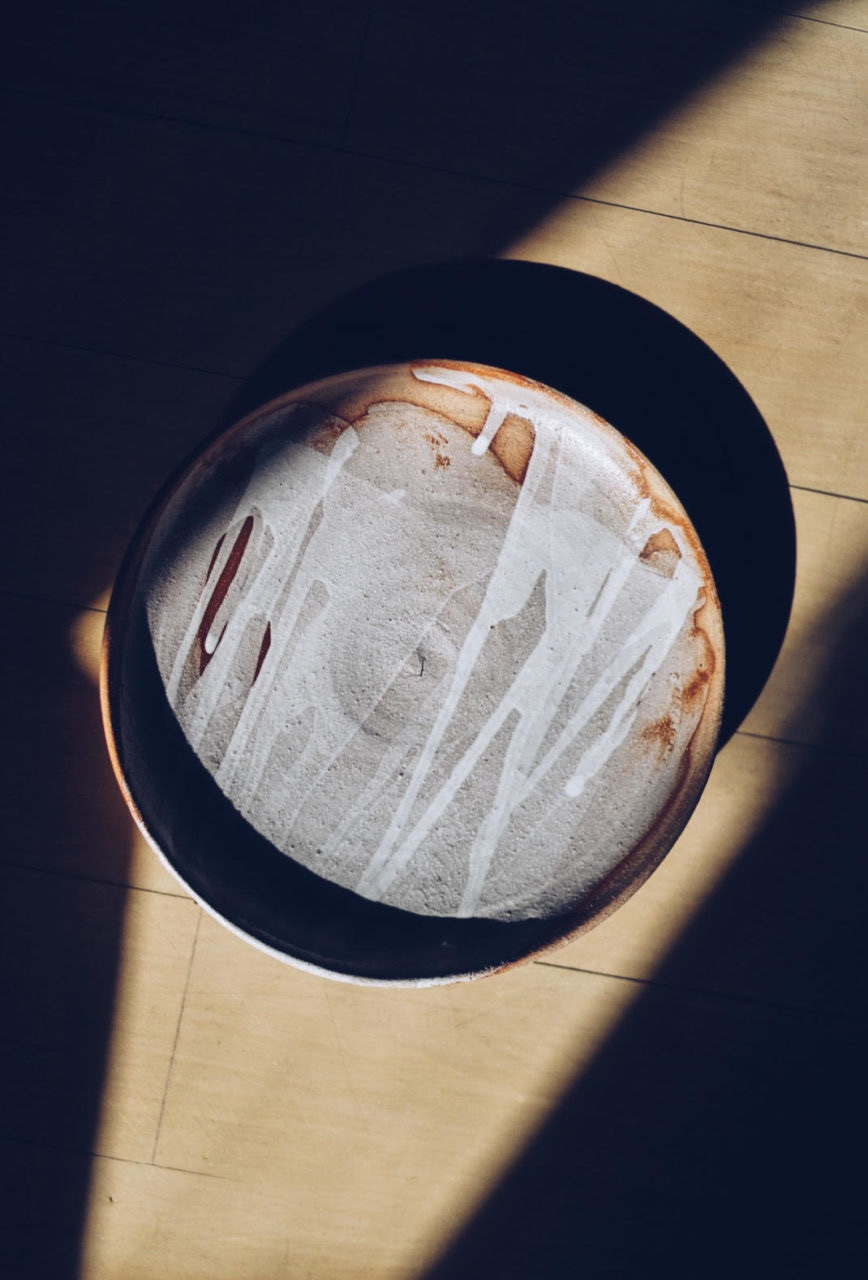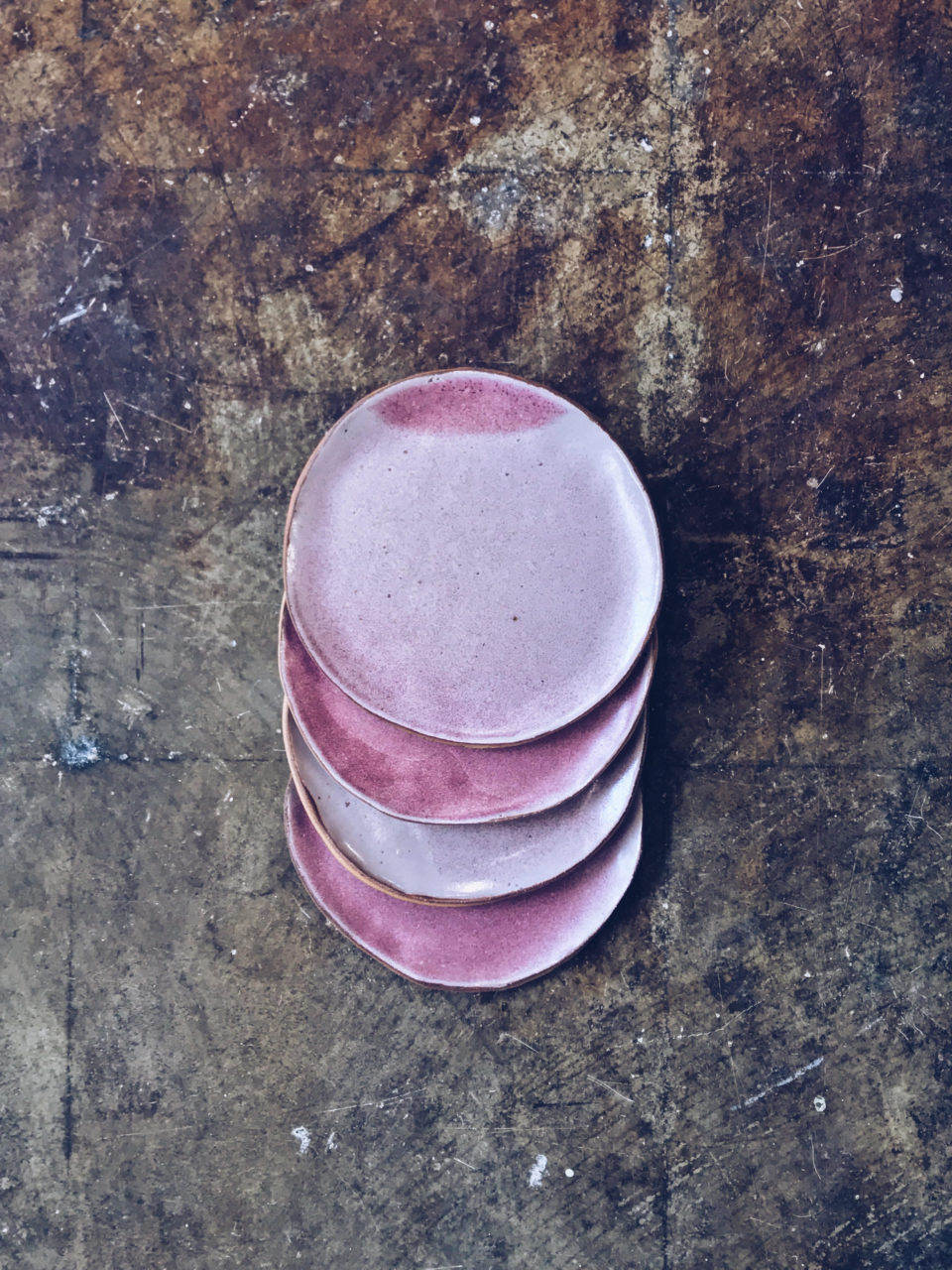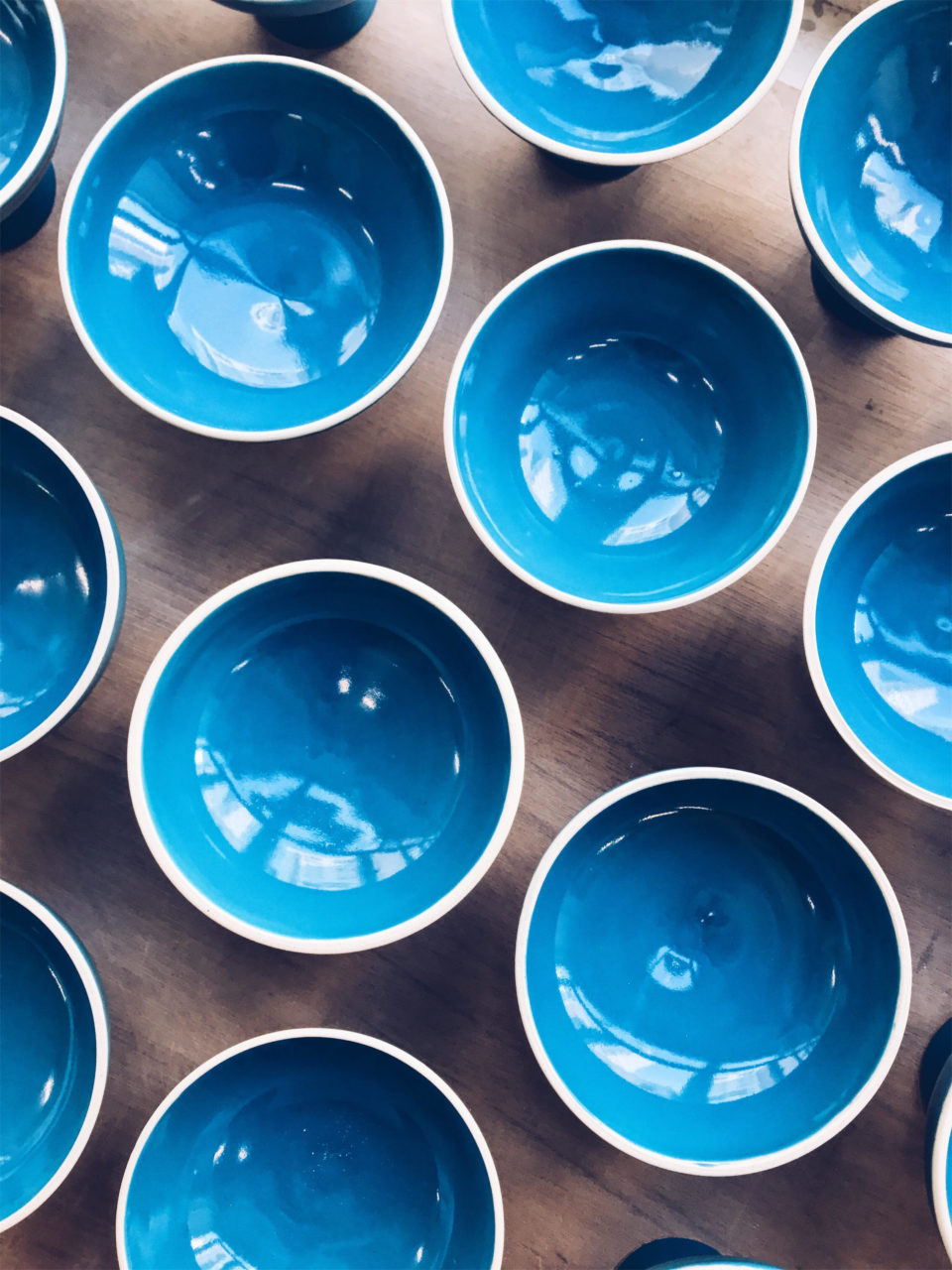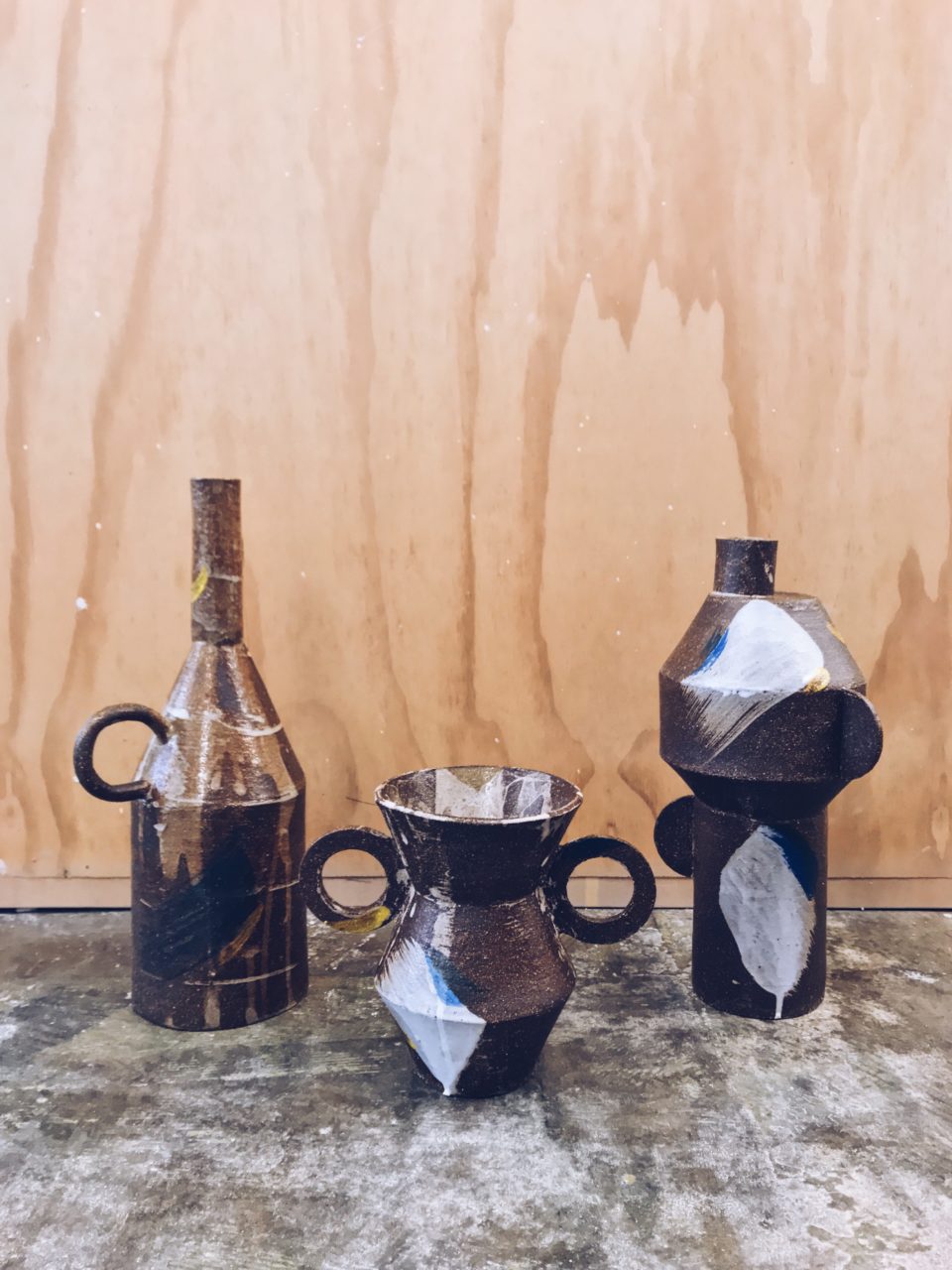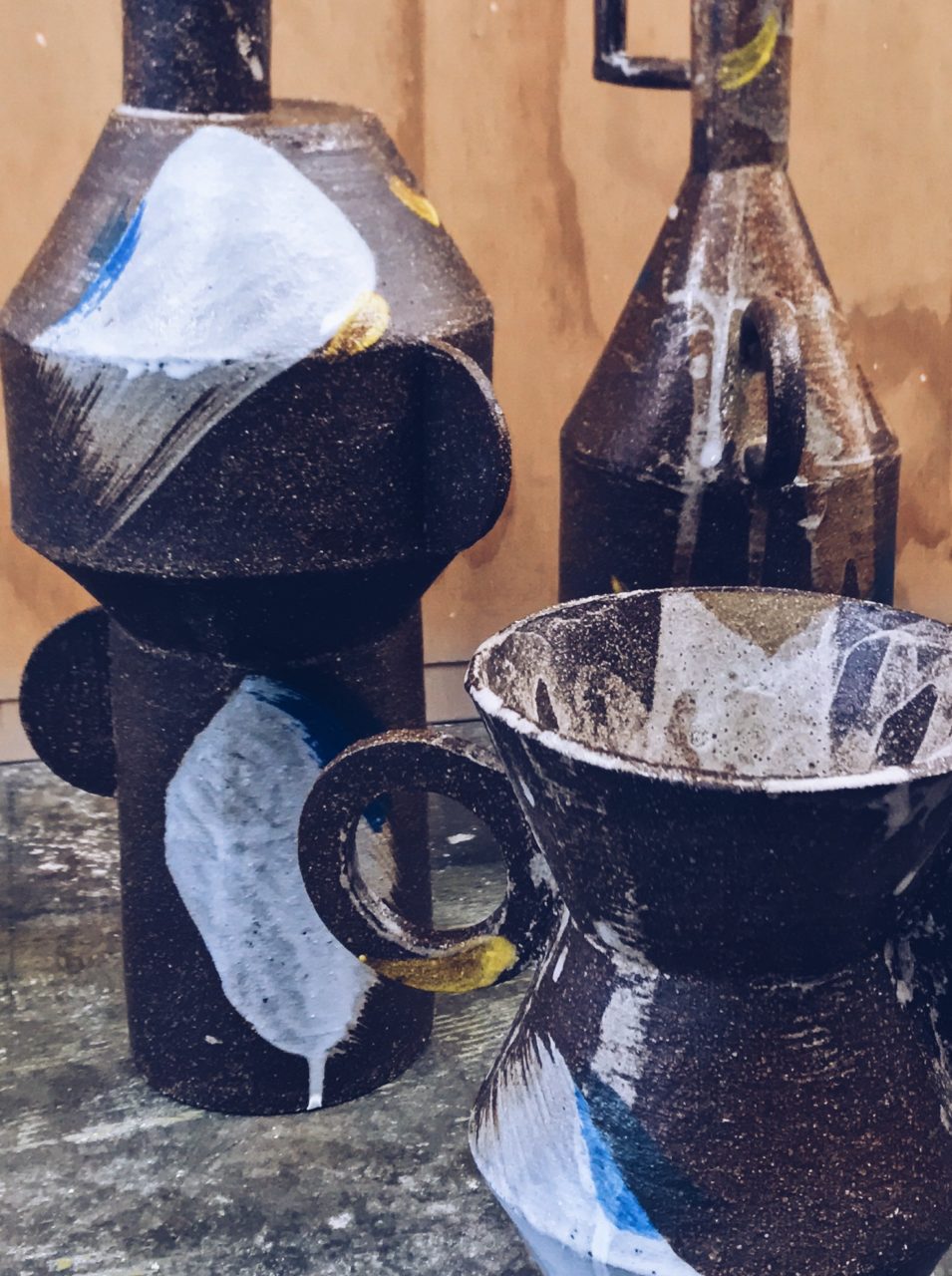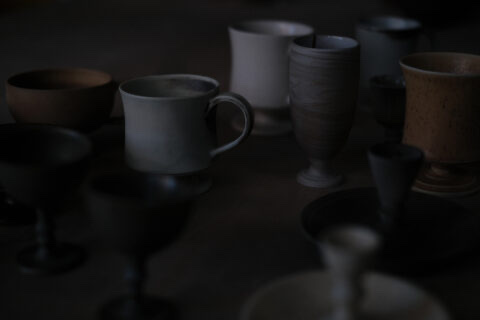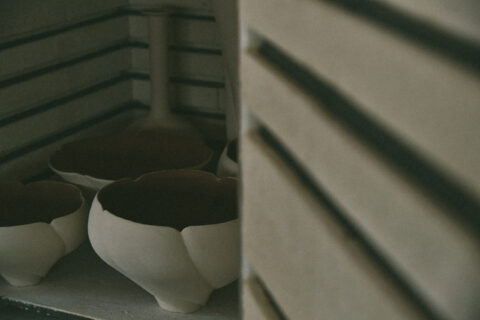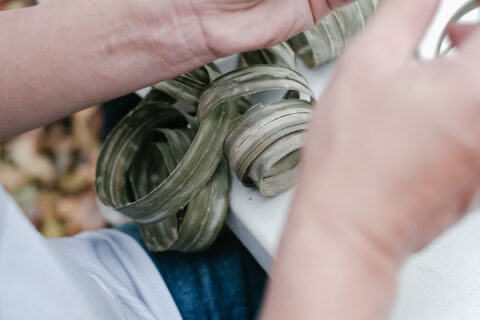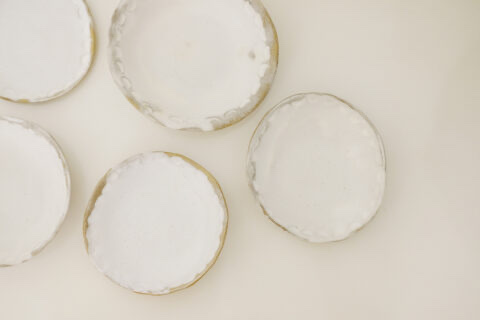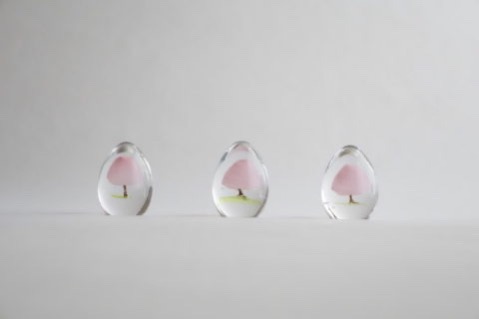幾年前學習冥想,初次接觸「正念」,才發現自己忘記了一些與生俱來的能力。例如吃飯時習慣看電視、玩手機或是與人聊天,沒有在意食物的樣子、它的氣味、味道和質感;又或是走在路上,腦子裡想東想西,沒有留意周遭的狀況,也沒有用心去體會身體動作的變化。這些習慣令感官變得遲緩,令人對身邊的事物變得一無所知。陶藝師Mariane Chan製作的陶器,線條簡潔又帶點粗糙質感,彷彿能把眼光都攝住,引導著我們要正念看待每一件物件。吃飯時能用心觀賞用碟的心思,不用時放在一旁也是漂亮的擺設,點亮整個空間,這大概是手造陶器獨有的氣質。
I first got to learn about mindfulness when picking up mediation a couple years ago, then I came to realize that I seem to have forgotten some of my natural abilities. For instance, we are used to being distracted by the TV, our phones or chatting with others while having our meal, so we stop paying attention to the presentation of the food, its smell, taste, and texture. Walking on the streets, we are often preoccupied and not being aware of the surroundings or our body gestures. Our habits have dulled down our senses and slowly made us insensitive to everything around us. The ceramic products made by ceramist Mariane Chan feature a sleek design with a rustic touch. The captivating pieces gently invite us to look at every object with mindfulness again. The sight of the thoughtful tableware arrangement has then become an integral part of the dining experience. Even when not in use, the sheer presence of the pottery is an inspiring decoration in your apartment, attributed to the subtle character of ceramics.
Q:你是怎樣與陶瓷結緣的?
A:我在兩年前開始接觸陶藝,由每個星期天的興趣班開始。我經常留意盛載食物的碗碟,旅行時也會特意到陶藝店逛逛,所以生起了學習陶瓷的念頭。
Q: 為什麼會選擇到日本瀨戶和中國江西景德鎮學陶瓷?
A:中國和日本都是世界上著名的陶瓷重鎮,想要尋找傳統製陶技術的話,當然要到這兩個地方。中國江西景德鎮在製作青花瓷等瓷器上,擁有悠久歷史,也是古時西方商人經絲綢之路來中國貿易,願意以金去換取的珍貴之物。這些歷史都為瓷器加添傳奇的色彩。在這裡,我認識到對瓷器有深入認識,同時技藝高超的工匠。 而日本的工匠則承傳wabi sabi的美學去創作,兩種不同的文化讓我思考我將要想要成為一個怎樣的陶藝師,並深刻地影響我的創作風格。
Q:在日本和中國學陶瓷的過程中有沒有有趣的經歷?
A:好像我之前所說,中國和日本的造陶理念截然不同,日本傾向製作細薄的作品,並只作簡單的裝飾;而中國的風格則是注重裝飾細節,把陶器顯得幼細和輕巧。雖然兩者看來都細緻精巧,但製作上卻各有獨特之處。另外,景德鎮的週末市集能讓人以一個有趣的方式去接觸當地的藝術家和看看他們最新的作品。
Q:這些學習陶瓷的經歷對你生活和價值觀有什麼轉變嗎?
A:做陶瓷的時候能讓我的思緒慢下來,整個過程就好像是進入了冥想的狀態。這跟我從前忙亂的時裝造型師生活形成強烈的對比。雖然,現在成為一個陶藝師也不是完全沒有壓力,做陶、與客人會面、包裝和推銷等都由我一人包辦,但我仍然很享受現在所走的每一步。
Q: 你會怎樣形容你的陶藝風格?
A:我很喜歡旅遊、藝術和設計,旅遊時會參觀博物館和看展覽,所以我想把藝術融入我的作品中,使它既實用,也如藝術品般具裝飾性。我希望更多人能欣賞漂亮的陶器,能夠每天使用之餘,放在一旁時也讓人感到賞心悅目。
Q:有沒有喜愛的陶藝家?平常從哪裡汲取靈感?
A:去年我幸運地在景德鎮遇上西班牙的陶藝家Juan Ortí,他的作品以工業的建築和形狀為基礎,強調俐落的線條和簡潔的風格,令我非常著迷。另外,我也很喜歡加拿大的陶藝家Janaki Larsen和意大利的陶藝家Bertozzi and Casoni。無論是看展覽或是隨心地看看Instagram,我也能從中獲得靈感。
Q: How did you first get interested in ceramics?
A:I first started it as a hobby 2 years ago and learned it at a weekend workshop. It is always something that I want to explore as I love food and always visit ceramics stores when I travel.
Q: How did you decide to go to Seto in Japan and Jingdezhen in China to study ceramics?
A:I wanted to find out the traditional techniques of ceramics making from Japan and China, which is both famous for it for years. Jingdezhen has a long history of making porcelain (blue and white) and being one of the treasures that the West was willing to trade for gold via Silk Road from the past is just fascinating. The craftsmen there are knowledgeable, highly skilful with precision while the Japanese believes in the philosophy of wabi sabi. Both place gives me insight for my creative journey as a ceramicist and influenced how I create my work today.
Q:Did you have any interesting experience when studying ceramics in Japan and China?
A:As mentioned previously, the Chinese and Japanese philosophy in making ceramics are quite different. The Japanese way tends to throw the piece really thin so they can saves time in trimming while the Chinese style focus trimming to make it really thin and light. Both achieve the same result but it is how they glaze the piece that makes them unique. The weekend market in JDZ is also an interesting way to meet some local artists and see their latest work.
Q:How has the experience of learning ceramics changed your life and values?
A:Making ceramics can slow down my mind and it’s almost meditative during the whole process which is a big contrast compare to my previous hectic job as a fashion stylist. Although it’s not like stress-free at all as I’m making ceramics, meeting client, packaging, marketing all by myself at the moment but I certainly enjoy every steps of it.
Q: How would you describe your ceramics style?
A:I love to travel and when I travel I visit museums and see exhibitions. I love art and design so I want to incorporate art in my ceramics so they are functional as well as decorative as an art piece. I want people to appreciate more about handmade ceramics, something they can use everyday but it should also be fun to look at.
Q:Do you have a favorite ceramicist? Where do you normally draw your inspiration from?
A:Last year I have the pleasure to meet Juan Ortí from Valencia, Spain when I stayed in Jingdezhen. His work is based on industrial buildings and forms, his work has strong clean lines and is minimal, something that I really like. Other artists like Janaki Larsen from Canada, Bertozzi and Casoni are also my favourite. Instagram and exhibitions are where I would look for inspirations.
Q:你最喜歡自己創作的哪一件作品?
A:最近我為展覽室造了一些手揑陶器,它們很能代表我是誰或我喜歡什麼。色彩鮮明的筆觸在深色的陶瓷上顯得份外注目,簡潔的造型創造了富現代感又有趣的作品,好像能點亮任何的環境一樣。
Q: Which piece of your work are you most satisfied with?
A:Recently I made some hand-built vessels for a showroom and they can really represent who I am, what I like. By mixing visually strong colour brush strokes with dark clay body, clean lines and form it creates a modern yet a fun piece to look at, and can brighten up any space.
Q:從前做時裝記者的經驗,怎樣影響你現在的陶藝創作?
A:從前的經驗培養了我對美麗事物的敏銳眼光,同時能把我的創作呈現眼前。現在做陶時不會只著眼於製作的過程,我也會想像當我拍攝它們時,該會是盛載什麼食物或配襯什麼道具呢?這些想法都影響著我的創作。
Q:作為全職的陶藝工作者,遇到最大的困難是?
A:當然是如何維生,讓自己繼續當一位陶藝師。當由工廠大量生產的陶藝品以不合理的低價售賣,導致身處香港的人都不願意付出很多金錢去購買陶藝品。如果他們知道一件手造的陶藝品製作是需要很多步驟和努力,或是如果他們能參與製作,我肯定他們會更懂得欣賞。昂貴的租金和原料的限制都是對身處香港的陶藝師的一大挑戰。
Q: 接下來,有沒有創作目標或方向?
A:我很幸運地有不同的客人委托我製作不同的項目,例如為餐廳製作餐具和參與藝術工作室的企劃。創作不應受任何規限,除了餐具,我現在亦有製作一些藝術品,將來會嘗試把金屬、玻璃等物料混合於陶瓷中,表現陶藝品更多的可能性。
Q:How does your previous experience as a fashion journalist influence your ceramic art?
A:I have developed an eye for all things beautiful. It has also make me visually aware when I create, or during my design process. I would imagine how my piece will be like when it is photographed with food or other props for instance, not just focusing on the ceramic making process itself.
Q: What is the greatest challenge of being a full-time ceramicist?
A:Definitely how to sustain myself as a ceramicist. People in HK are not willing to pay much for a piece of ceramics, given there’s a lot of factory made products out there on the market selling at ridiculously low price. If they find out the many processes and hard work that are involved behind handmade ceramics I’m sure they will learn to appreciate more. High rent and limitation of the types of firing/ raw materials are also making it a challenge as a ceramicist in HK.
Q: What is your next goal or the new direction for your ceramic art?
A:I’m lucky to have different kinds of client commissioning me for projects like tableware design for restaurants and I am also currently creating for a studio flat project. I don’t think there should be any limitations or rules when I create. So I wouldn’t say that I only focus on doing tableware, I’m also working on some art pieces/ objects at the moment and I would like to mix other materials such as metal/ glass with ceramics in the future.
